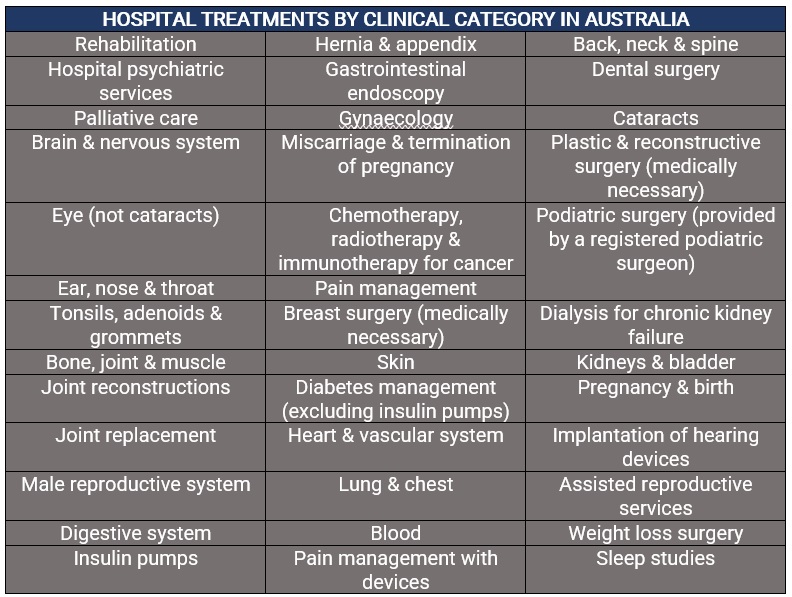Navigate Car Insurance USA ensures your peace of mind on the road. Find reliable coverage tailored to your needs and secure your journey today!
Understanding the complexities of car insurance in the United States can be daunting, but it’s critical for any driver looking to safeguard their ride. With a multitude of insurance providers and coverage options available, selecting the ideal insurance plan requires thorough research and a clear grasp of your specific needs.
This introductory guide aims to streamline the process, offering you a clear path through the maze of terms, policies, and legal requirements. It’s designed to empower you with the knowledge to make informed decisions, ensuring you obtain protection that aligns with your driving habits, risk factors, and budget. Keep your vehicle secure and your mind at ease by mastering the basics of American car insurance with our concise yet comprehensive overview.
Introduction To Car Insurance In The USA
Driving a car in the USA is a responsibility as much as a convenience. From bustling city streets to serene rural roads, a safe journey is crucial. Car insurance stands as a guard, protecting you and your vehicle against unforeseen events. What does it mean to be insured? Why does it matter? Let’s gear up and steer through the landscape of car insurance in the USA.
The Importance Of Being Insured
Travelling by car without insurance is like sailing a boat without a lifejacket. It’s risky. Insurance offers financial protection if accidents happen. It pays for damages, shielding your savings. In many states, the law requires it. Thus, being insured is not only wise but often, necessary.
Basic Types Of Car Insurance Coverage
Not all car insurance is the same. Coverage varies. Here’s a breakdown of basic car insurance types:
- Liability Coverage: Pays for other people’s injuries and property damage if you cause an accident.
- Collision Coverage: Helps repair or replace your car if it’s damaged in a collision.
- Comprehensive Coverage: Covers damage to your car from non-collision events like theft, fire, or natural disasters.
- Personal Injury Protection (PIP): Helps with medical expenses regardless of who’s at fault.
- Uninsured/Underinsured Motorist Coverage: Protects you if an at-fault driver has no or insufficient insurance.
State-by-state Variations
Understanding car insurance complexities across the U. S. requires knowledge of local laws, as each state sets unique coverage standards. This guide simplifies the maze of regulations, ensuring drivers secure suitable protection for their vehicles.
Securing the right car insurance can feel like a maze. The rules change as you cross state lines. Each state in the USA sets its own car insurance laws. This guide shines a light on those differences, ensuring drivers can make informed choices for their protection.
Minimum Coverage Requirements
The minimum insurance you need depends on where you live. Here’s what to know:
| State | Bodily Injury Liability | Property Damage Liability |
|---|---|---|
| California | $15,000 per person / $30,000 per accident | $5,000 |
| Texas | $30,000 per person / $60,000 per accident | $25,000 |
| New York | $25,000 per person / $50,000 per accident | $10,000 |
Check your state’s department of insurance website for exact numbers. Don’t just buy the minimum. Consider higher limits for better protection.
No-fault Versus At-fault States
In at-fault states, the driver who caused the accident is responsible for the damages. In no-fault states, your insurance pays for your losses, regardless of who is at fault.
- At-Fault States: Allow you to sue the other driver.
- No-Fault States: Limit lawsuits. Each party’s insurance handles their costs.
Currently, 12 states and Puerto Rico have no-fault insurance laws. This includes Florida, Michigan, and New Jersey.
Knowing if you’re in a no-fault or at-fault state affects the coverage you should buy.
Deciphering Your Policy
Understanding car insurance can feel like learning a new language. Knowing the details helps protect your ride without overpaying. Dive into your policy’s specifics below.
Understanding Premiums, Deductibles, And Limits
Your insurance premium is the amount you pay for your policy. It varies by company and coverage.
Deductibles are what you pay out of pocket before insurance kicks in. Choose a deductible that suits your savings.
Limits define the maximum amount your policy will pay. Higher limits mean more coverage but higher premiums.
Add-on Options And Endorsements
Extras on your policy can give you peace of mind. Examples include roadside assistance and rental car coverage.
- Roadside Assistance: Help when you’re stranded.
- Rental Car Coverage: A car while yours is in the shop.
- Gap Insurance: Pays off your loan if your car is totaled.
| Add-On | Benefit |
|---|---|
| Roadside Assistance | Immediate help for car troubles. |
| Rental Car Coverage | A temporary vehicle for convenience. |
| Gap Insurance | Financial safety for your auto loans. |

Credit: m.facebook.com
Choosing The Right Insurance Provider
When it comes to protecting your vehicle, selecting the right insurance provider is a critical move. You’ll want to ensure that not only are you getting a competitive rate, but also reliable service and comprehensive coverage that suits your specific needs. Let’s steer through the process of comparing quotes and examining insurance providers to secure the best policy for your ride.
Comparing Quotes And Services
Shopping for car insurance involves looking at more than just price. Consider these key aspects:
- Coverage Options: Providers offer various plans. Make sure you understand what’s included.
- Discount Possibilities: Many insurers provide discounts for multiple reasons. Find out which you qualify for.
- Customization: Look for flexibility in policies to tailor your coverage to your needs.
Use online comparison tools or consult with agents to get personalized quotes. This approach helps in making an informed decision.
Add additional rows as needed| Insurance Provider | Coverage Options | Discounts | Rate |
|---|---|---|---|
| Provider A | Full coverage, Liability Only, Roadside Assistance | Safe Driver, Multi-Car, Loyalty | $900/year |
| Provider B | Full coverage, Gap Insurance, Accident Forgiveness | Military, Student, Bundling | $1,200/year |
Evaluating Customer Reviews And Financial Strength
Research is key to finding a reliable insurance provider. Consider these factors:
- Read Customer Reviews: Websites and forums provide insights into customer satisfaction and complaints.
- Check Financial Stability: Look at ratings from independent agencies like A.M. Best to gauge the insurer’s ability to pay claims.
Insurers with positive reviews and strong financial health tend to offer peace of mind and quality service.
Saving On Your Premiums
Are you feeling the pinch with your current car insurance premium? Fear not!
With savvy strategies and informed choices, you can trim those rates and enjoy your ride without financial frets.
Let’s dive into the smart ways to save on your car insurance.
Discount Opportunities
Insurers love rewarding responsible clients.
- Bundle and save: Combine your car insurance with home or renter’s insurance.
- Good driver discounts: A clean driving record can lower your rates.
- Student discounts: Full-time students with good grades get rewarded.
- Vehicle safety features: Cars with advanced safety tech may qualify for deductions.
- Defensive driving courses: Extra training can mean less risk and more savings.
- Affiliation discounts: Members of certain groups or employers often get rate cuts.
Contact your insurer to uncover all potential savings.
Impact Of Driving Record And Other Factors
Your driving history holds significant sway over your premiums.
| Driving History | Premium Impact |
|---|---|
| Accidents or violations | Increases rates |
| No history of claims | Lowers rates |
| Defensive driving | Potentially decreases costs |
| DUI/DWI incidents | Significantly raises rates |
But that’s not all! Your age, location, and type of vehicle also play roles.
Young or inexperienced drivers often face steeper rates.
Live in a busy city or area prone to theft? Your insurance might cost more.
Driving a sports car? Expect to pay more than a sedan or minivan owner.
Review your policy and driving habits regularly to ensure you’re not overpaying.
Filing A Claim: A Step-by-step Guide
Accidents or incidents can happen at any time. Your ability to navigate the insurance claims process is crucial. This guide simplifies each step. It ensures that you can swiftly protect your ride and get back on the road. Understanding how to file a claim helps relieve the stress that comes after an unexpected event.
Reporting an IncidentReporting An Incident
Once you ensure everyone’s safety, it’s time to report the incident. Timeliness is key. Follow these steps:
- Get to safety: Secure the scene to prevent further damage or injury.
- Gather information: Note the details, take photos, and collect witness information.
- Contact your insurer: Call as soon as possible to report the incident.
- Complete a report: Fill out any necessary paperwork your insurance company requires.
Navigating The Claims Process
The claims process can seem daunting, but these steps will help:
- Claim investigation: Your insurer reviews the incident.
- Damage evaluation: A professional assesses your car’s damage.
- Review of policy: Confirm what your insurance covers.
- Claim resolution: Insurer provides funds for repairs or replacement.
Always communicate openly with your insurance adjuster. Provide all required documentation without delay to ensure a smooth process.
Understanding Your Rights And Responsibilities
When it comes to car insurance in the USA, it’s essential to grasp your rights and duties. Your protection on the roads hinges on the fine print of your policy. Learn about the particulars of dealing with other insurers and seeking legal aid if necessary.
Dealing With Other Parties’ Insurers
After an accident, communication with the other party’s insurer is key. Ensure to exchange all relevant information at the site:
- Name and contact details
- Insurance company and policy number
- Make, model, and registration of all vehicles involved
Report the incident to your insurance company, even if you plan to claim from the other party’s. This could protect you against unforeseen claims.
When other insurers contact you, provide basic information but refrain from admitting fault or signing documents until you’ve consulted your insurer or attorney.
Knowing When To Seek Legal Assistance
There are clear moments to seek legal help:
- If disputes arise over who is at fault.
- When facing injuries, an attorney can help claim medical expenses.
- If the other insurer denies your claim or offers a low settlement.
Remember, a lawyer ensures that your rights are upheld. Laws can be complex; professional advice could be crucial in navigating them.
Keep detailed records and gather evidence like photos and police reports. Such documentation is vital in legal proceedings.

Credit: www.iata.org
Future Trends In Car Insurance
Exploring the evolving landscape of car insurance unveils how innovation shapes protection. In this dynamic sector, upcoming trends pinpoint to a future where technology and regulations redefine insurance standards. Let’s delve into this journey to ensure your ride remains shielded.
Technology’s Influence On Insurance
The surge of tech has revolutionized car insurance. Data analytics and AI have refined risk assessment, leading to tailored premiums for drivers. Below are key tech trends:
- Telematics: Devices monitor driving habits, rewarding safe drivers with lower rates.
- Mobile Apps: Simplify claims and policy management, offering convenience.
- Automated Processes: Speed up claims, enhance customer experience.
Fascinating advancements like self-driving cars will further disrupt traditional insurance models. Insurers may shift focus from driver behavior to vehicle performance and systems reliability.
Anticipating Changes In Legislation And Coverage
The insurance domain remains sensitive to legal changes. Upcoming legislation is anticipated to address new technologies and their implications. Keep an eye out for:
| New Laws | Impact |
|---|---|
| Data Privacy | Determines information insurers can use. |
| Autonomous Vehicles | Shapes liability and coverage norms. |
| Ridesharing Policies | Influences coverage for gig economy drivers. |
Insurers are preparing for a wave of change. These adjustments will ensure policies stay relevant to the needs of modern drivers and vehicles.
Staying Protected On The Road
Navigating car insurance in the USA can sometimes feel like a bumpy road. Understanding what keeps you protected can make all the difference. Safety on the streets begins with the right insurance policy. It’s not just about legal compliance; it’s about peace of mind. Here’s how to ensure your car insurance policy matches your needs and the best habits for remaining safeguarded while driving.
Policy Review And Upkeep
Regular policy reviews are essential. Needs change, so your car insurance should adapt too. A yearly check can reveal if coverage is still a good fit or if updates are necessary.
Keep personal information current. Any change, like a new address, could affect your policy rates or coverage.
Don’t miss the payment due dates. Late payments may lead to a lapse in coverage or penalties.
Understand your policy. Know what’s covered in case of accidents, theft, or natural disasters. Clarity on coverage limits and deductibles helps you prepare for any scenario.
Here’s a checklist for keeping the policy up-to-date:
- Review policy annually
- Update life changes immediately
- Remember payment dates
- Understand coverage details
Best Practices For Insured Drivers
Drive responsibly. Safe driving does more than prevent accidents. It can also lead to lower premiums.
Report accidents promptly. Quick reporting helps ensure claims are processed without delay.
Keep an emergency kit in your car. It should have first aid supplies, a phone charger, and important insurance documents.
Become familiar with the claims process. Knowing what to do after an incident can help ease stress.
Maintain your vehicle. Regular checks and servicing can prevent issues that might otherwise lead to a claim.
Follow these best practices:
- Adopt safe driving habits
- Report accidents quickly
- Have an emergency kit ready
- Understand the claims process
- Regularly service your vehicle

Credit: twitter.com
Frequently Asked Questions On Navigating Car Insurance In The Usa: A Guide To Protecting Your Ride
What Factors Affect Car Insurance Rates In The Usa?
Several factors influence car insurance rates in the USA, including the driver’s age, driving history, credit score, vehicle make and model, and geographical location. Insurers assess these elements to determine risk and calculate premiums accordingly.
How Can I Save On My Car Insurance Premiums?
To save on car insurance, consider shopping around for competitive quotes, bundling policies, maintaining a clean driving record, increasing deductibles, and taking advantage of discounts for things like safety features or defensive driving courses.
Is Car Insurance Mandatory In All Us States?
Almost all US states require some form of car insurance or financial responsibility. However, the specific requirements can vary by state, with some requiring liability coverage, while others may also mandate uninsured/underinsured motorist coverage or personal injury protection.
What Is The Difference Between Collision And Comprehensive Coverage?
Collision coverage pays for damage to your car resulting from a collision, regardless of fault, while comprehensive coverage pays for non-collision-related damage such as theft, vandalism, or natural disasters. These coverages are often optional unless required by a lender.
Conclusion
Understanding car insurance in the USA is essential for every driver. By now, you should feel empowered to choose the right policy for your needs. Remember, comparing quotes and thoroughly reading terms can save you money and stress. Drive safely, knowing your ride is well-protected with the ideal coverage.


